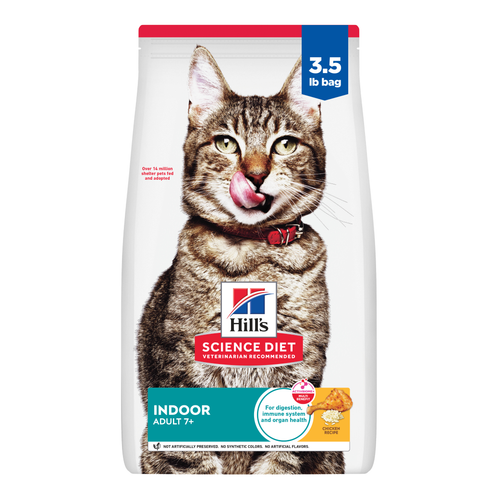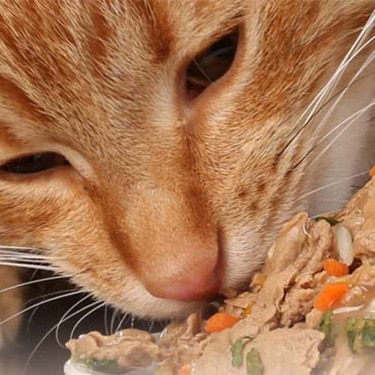

We know dogs can be taught to obey basic commands, but what about cats? While they might not be known for their obedience, cats are certainly capable of learning. In fact, kitten behavior lends itself to training because it feels like play, which makes them especially open to learning new behaviors.
With patience and consistency, training can lead to lifelong benefits and a more enriching relationship for you and your furry friend. Here's what you should know about kitten obedience training.
What Is Kitten Obedience Training?
Kitten obedience training simply refers to training your kitten to perform basic commands. What you train them to do will largely depend on the needs of your household, since every cat family is different. For example, you might want to teach them to stay off of countertops or scratch an "allowed" target. But there are other tricks that can also be helpful, such as sitting still for grooming or even looking at you on command.
Benefits of Kitten Behavior Training
Consider kitten obedience training as lifestyle training that teaches appropriate cat behaviors they perform every day. Training your cat to behave appropriately helps avoid common cat behavior problems that could cause strife in your home and damage your cat-parent relationship. It also keeps their mind and body active, teaches good social skills and strengthens their bond with you.
Training can prevent or solve behavior problems by enhancing your cat's emotional health. When their brain is engaged, it reduces stress and keeps them happy and healthy longer.
Common Cat Behavioral Problems
There are several common kitten behavior problems that can be addressed through kitten training, saving you a world of headaches and keeping you in tune with your cat's needs. Long-standing problem behaviors take more time to correct, so don't delay addressing these common issues:
Furniture scratching
Spraying and eliminating outside the litter box
Jumping on counters
Aggression toward people or other animals
Compulsive behaviors, such as over-grooming or excessively scratching or biting

Types of Kitten Obedience Training
Cats are notorious for their stubbornness and independence, but with the right motivation, they can learn new behaviors and routines. Typically, they learn more quickly when the trick or command is something they do naturally, like scratching or using the litter box. Providing cats with an ideal opportunity to perform the desired behavior, rather than getting upset when they go against house rules, is a great way to provide positive reinforcement and encourage them to repeat the right behavior.
These are the most common techniques to use for kitten behavior training. All of them have their place, but your cat may respond better using one over another, so don't hesitate to try more than one or use them in combination. After some trial and error, you'll find what works best for your kitty.
Reward-Based Training
Cats respond best to positive reinforcement. Encourage good behavior with a reward like praise, a tasty treat, petting or favorite toy. Anything your cat especially likes can be used as positive reinforcement to tell the kitten you approve. This reward-based training teaches your cat to associate good behavior with a positive outcome for them.
That said, be careful not to give your cat too many treats (more than 10% of their daily food intake), as this can lead to obesity or a nutritional imbalance.
Clicker Training
Cats respond extremely well to clicker training, which uses a click sound to signal that you like a particular behavior. You wait for them to perform the desired behavior, then pair the click with rewards (usually treats) to reinforce that behavior. Cats learn that click predicts a reward, so they're motivated to repeat the behavior.
Lure Training
Some cats don't respond well to treats. In this case, the lure training technique entices cats to perform the desired behavior by luring them with a feather toy lure. Drawing the lure across the surface of a scratch post, for example, prompts the kitten to claw the proper target, at which point you can reward with additional play and praise.
Common Cat Behavioral Problems
There are several common kitten behavior problems that can be addressed through kitten training, saving you a world of headaches and keeping you in tune with your cat's needs. Long-standing problem behaviors take more time to correct, so don't delay addressing these common issues:
Furniture scratching
Spraying and eliminating outside the litter box
Jumping on counters
Aggression toward people or other animals
Compulsive behaviors, such as over-grooming or excessively scratching or biting

Types of Kitten Obedience Training
Cats are notorious for their stubbornness and independence, but with the right motivation, they can learn new behaviors and routines. Typically, they learn more quickly when the trick or command is something they do naturally, like scratching or using the litter box. Providing cats with an ideal opportunity to perform the desired behavior, rather than getting upset when they go against house rules, is a great way to provide positive reinforcement and encourage them to repeat the right behavior.
These are the most common techniques to use for kitten behavior training. All of them have their place, but your cat may respond better using one over another, so don't hesitate to try more than one or use them in combination. After some trial and error, you'll find what works best for your kitty.
Reward-Based Training
Cats respond best to positive reinforcement. Encourage good behavior with a reward like praise, a tasty treat, petting or favorite toy. Anything your cat especially likes can be used as positive reinforcement to tell the kitten you approve. This reward-based training teaches your cat to associate good behavior with a positive outcome for them.
That said, be careful not to give your cat too many treats (more than 10% of their daily food intake), as this can lead to obesity or a nutritional imbalance.
Clicker Training
Cats respond extremely well to clicker training, which uses a click sound to signal that you like a particular behavior. You wait for them to perform the desired behavior, then pair the click with rewards (usually treats) to reinforce that behavior. Cats learn that click predicts a reward, so they're motivated to repeat the behavior.
Lure Training
Some cats don't respond well to treats. In this case, the lure training technique entices cats to perform the desired behavior by luring them with a feather toy lure. Drawing the lure across the surface of a scratch post, for example, prompts the kitten to claw the proper target, at which point you can reward with additional play and praise.
Strategies for Kitten Behavior Training
Consistency and communication are just as important as the strategy you use. Whether you encourage the right behavior with treats or lures, use these strategies to motivate your cat and help them understand what's expected.
Use Clear, Consistent Cues
With any training technique, choose single words or short phrases to name the behavior, and focus on one command at a time. For example, if you're training your kitten to scratch in an allowed location, say "good scratch" when they scratch the correct place. Consistently partner the word "good" with the named behavior to tell the cat they're doing the right thing.
In the same way, use a consistent cue that tells the cat to stop a forbidden behavior. Firmly say "no!" and then use the above techniques to teach the right action instead. For kittens, a hissing sound often interrupts poor behavior and works better than saying "no", but this won't usually work with adults.
Expand the Location
Your cat will learn to associate a command and behavior based on location — near the scratch post, for example, or in the room with the litter box for potty training. But for trick training that doesn't rely on location (teaching "sit" or "wave", for example), once they master the command, practice in different areas of the house. This helps your cat get used to responding to you in different contexts.
Use Redirection
When training your kitten, have plenty of toys available. If they do something not allowed, say "no" or hiss to interrupt the behavior. Tossing a toy across the room can interrupt and redirect the behavior. You might also use the feather lure or other technique to redirect them, or use catnip to make an allowed location more appealing.
Make sure to avoid using any negative reinforcement techniques — do not punish your cat when they do something naughty — but you can follow these guidelines for redirection.
Encourage Self-Corrections
Cats learn to avoid areas or actions on their own when they smell offensive, taste nasty or feel weird. For instance, cats are averse to certain scents like perfume and citrus. You can soak cotton balls in these scents to keep your cat away from places you don't want them to go. Once trained, you can eliminate the scent. Make forbidden surfaces unpleasant or inaccessible while making the allowed alternative appealing, easy and enjoyable.
For example, you might place perfume-soaked cotton balls on your kitchen counter, while placing catnip or treats on a cat tree. That way, the kitten naturally trains themselves to do the right thing.

How to Address Bad Behavior in Your Cat
We all want to know how to train a kitten to behave. Every cat is different, and training can be extremely trying on your patience. Here's what to do if your cat indulges in these problem behaviors.
Furniture Scratching
Use your interruption cue ("no" or hiss) to stop the behavior. Then use the lure technique with a feather or toy to redirect your cat to the appropriate target. Reward the kitten whenever claws contact the scratching post. You can also apply double-sided sticky tape to furniture as a self-correction. This makes the fur on their paws stick to the tape, which will deter them from doing it again.
Litter Box Lapses
Cats typically won't go in a dirty litter box, so the first step is keeping the box clean. It may also help to provide multiple boxes throughout your home. If your cat still won't use their litter box, consider clicker training to signal and reward good behavior.
Keep in mind that this behavior can occur due to anxiety or other underlying health conditions. If it's a persistent problem, contact your veterinarian for support and recommendations.
Countertop Cruising
Make forbidden surfaces unappealing with double-sided sticky tape or aluminum foil. Provide a cat tree that is higher than the counter, and use clicker training to reward the kitten for lounging there instead.
Aggression
Kitten play aggression typically goes away as kittens mature, but it's still important to communicate what's allowed and what's not. You can toss toys to redirect bites and use lure training to encourage them to claw scratch posts. Make sure to tell them it hurts (using "no" or hissing) and stop the play. This teaches them that aggression means an end to the fun games.
Building Habits for a Happy Home
If your adult cat doesn't typically act out and has a sudden behavior change, contact your vet. Changes in behavior can be caused by stress, shifts in their environment or underlying medical issues — so a quick exam can help rule out anything serious.
Cat behavior training can take time, but with consistency and patience, it's possible to help them build habits that work for both of you. A well-behaved kitty means a happy home, and your bond will benefit for it.




















